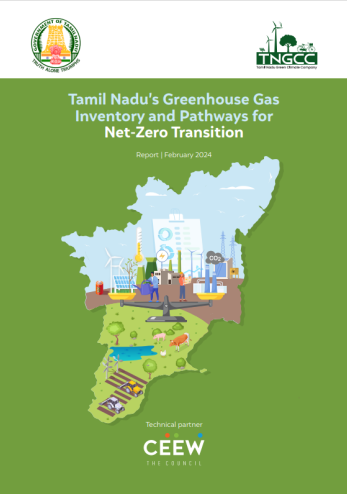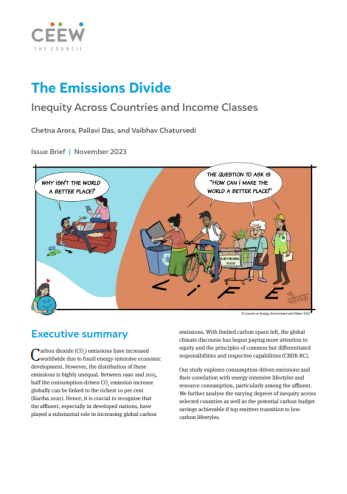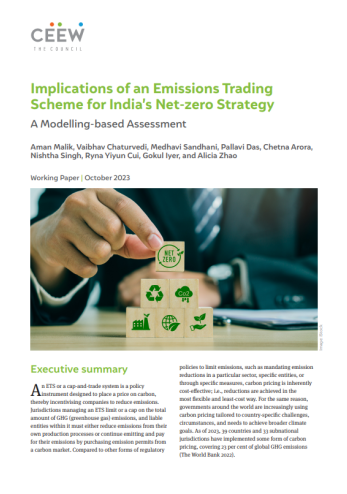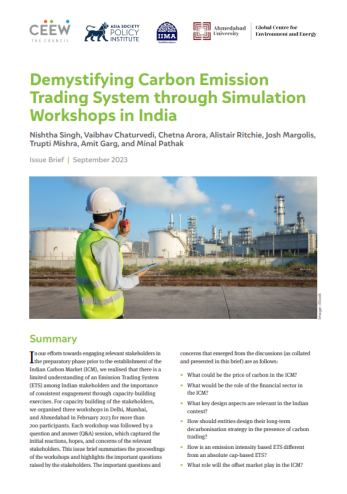Paper
Modelling Long Term HFC Emissions from India’s Residential Air-Conditioning Sector
Exploring Energy and Global Warming Implications of the Transition to Alternative Refrigerants
Vaibhav Chaturvedi, Mohit Sharma
July 2014 | Low-carbon Economy, Sustainable Cooling
Suggested Citation: Vaibhav Chaturvedi and Mohit Sharma. 2014. Modelling Long Term HFC Emissions from India’s Residential Air-Conditioning Sector: Exploring Energy and Global Warming Implications of the Transition to Alternative Refrigerants, Implementation of Best Practices, and Adoption of a Sustainable Lifestyle. New Delhi: Council on Energy Environment and Water.
Overview
This working paper analyses a suite of Hydrofluorocarbons (HFC) and alternative coolant gas scenarios to understand the implications for greenhouse gas (GHG) emissions from India’s residential air conditioner (AC) sector. The analysis is within the integrated assessment modelling framework of the Global Change Assessment Model (GCAM). The paper also gives policy recommendations to help transition to lower global warming potential (GWP) alternatives.
Key Findings
- Transitioning away from HFC 410A to low global warming potential (GWP) or natural alternatives will entail higher costs. This can happen due to design changes required for the alternative gases.
- Factors such as economic growth, floor space expansion, improvements in building efficiency that can reduce cooling demands can have significant implications for the magnitude of India's long term HFC emissions.
- HFC410A emissions in 2050 will contribute to 32 per cent of the total global warming impact from the residential AC sector in India.
- Reduction on the global warming footprint of the residential sector will be 31-38 per cent during the period 2010-50 due to gains both from energy efficiency as well as low GWP alternatives.
- The overall cumulative GHG reduction benefit due to the adoption of best practices will be fairly limited up to 20 per cent.
- HCFC phase-out will happen as per the Montreal Protocol commitments and HFC410A will replace HCFC22 under the business as usual (BAS) scenario.
- Two key alternative gases that penetrated the residential air conditioner market in 2014 were the R32 and R290. They claimed energy efficiency gains achieved through design modifications while moving towards alternative gases.
Key Recommendations
- Adhere to high standards of best practices (followed across the globe) and alternatives to HFCs. This will reduce direct emissions and will significantly bring down the global warming potential scenario.
- Harness energy efficiency potential of end-use AC technologies. Analyse the reason for low penetration of high-efficiency equipment and take steps to increase their market share.
- Undertake independent technical assessment that can provide unbiased and reliable information to the market for making optimal choices suitable for individual manufacturers.
- Provide information on AC coolant recharge frequency and recovery of scrapped AC units for better estimation and understanding of direct emissions.
- Regulate and incentivise the recovery and re-use of high GWP AC coolant.
Reduction on the global warming footprint of the residential sector will be 31-38 per cent during the period 2010-50 due to gains both from energy efficiency as well as low GWP alternati







